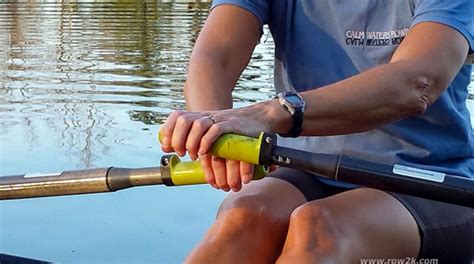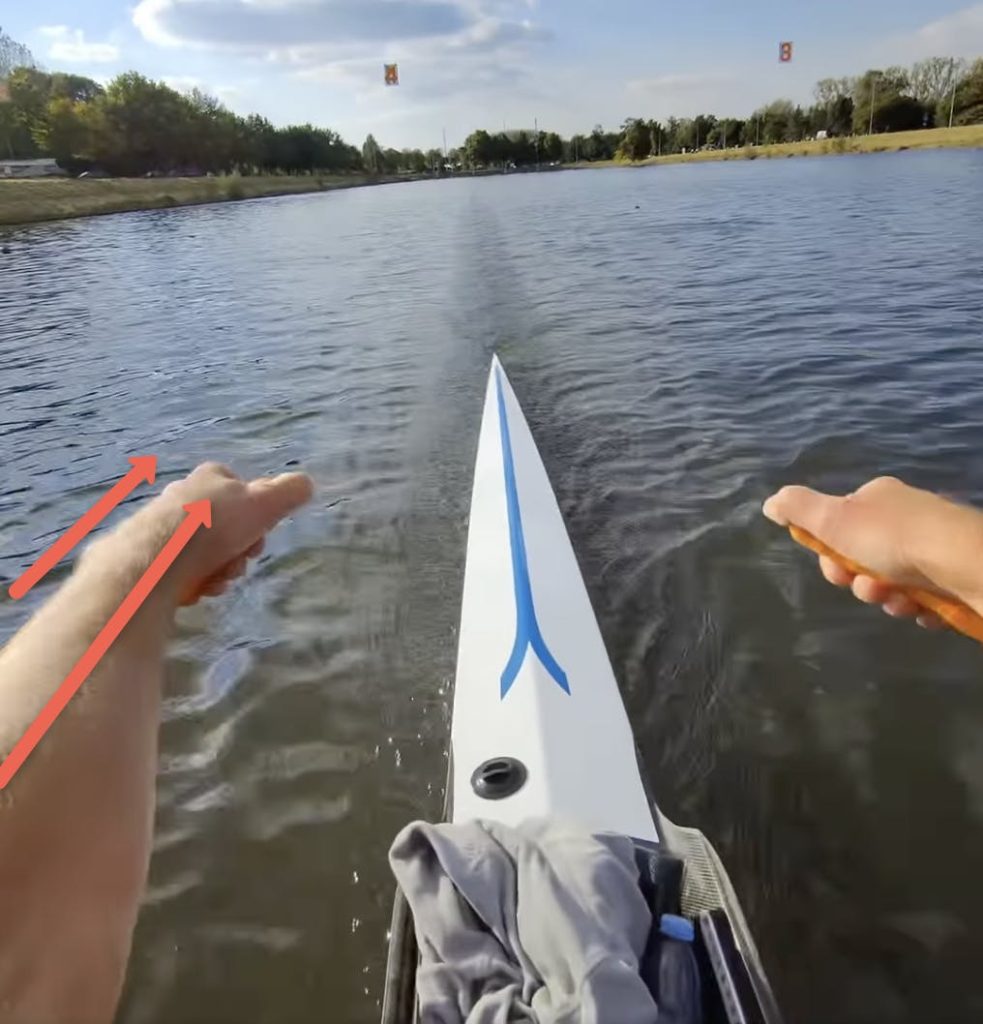Inspired by an extensive discussion on the Masters Rowing International Facebook group, this article summarises the issue and the advice shared by group members.
How to scull without scraping your knuckles
If you’ve been sculling for a while, you might have experienced the painful frustration of scraped or “bloody” knuckles. It’s quite common, but it’s not one you have to live with. By making a few key adjustments to your technique, you can keep your hands intact and enjoy smoother, more efficient rowing.
In this post, we’ll explore why scraped knuckles happen and how to prevent them. Whether you’re an intermediate master rower looking to refine your sculling or simply want to row pain-free, these tips give you some things to try.

Why do you scrape your knuckles?
The root cause of scraped knuckles lies in how your hands and the oar handles interact during the rowing stroke, both on the recovery and in the power phase. As you bring the handles toward your body, they overlap at the crossover point. This is the place where the fingernails of one hand can pull over the skin of your other hand.
When sculling, you can choose a couple of different techniques to reduce the likelihood of hazard at the overlap. My favoured technique is to scull with the left hand above and slightly in front of the right hand, so the knuckles of your right hand "nest" into the base of your palm of the left hand - the fleshy part at the bottom of your thumb. This "left-over-right" technique applies throughout the stroke but is most obvious when you handles go through cross-over.
This method is facilitated by the boat rig whereby the left oarlock is rigged 10mm (1 centimeter) higher than the right oarlock. It relies on you being able to scull with the left hand / arm always above the right hand / arm, throughout the stroke, from catch to finish.
In this still taken from a video, you can see the sculler's left hand is higher than his right hand at the catch. He continues the stroke with the left always higher than the right through to the finish. If I'm being picky, he sculls the power phase left in front of right and the recovery phase with hands stacked one above the other. But this is a minor point of refinement. His boat runs level and he has not got obvious scratches on his knuckles!

Alternative techniques include sculling with one hand directly above the other, sculling with a large vertical gap between your hands at the crossover.
Other contributing factors include:
- Incorrect hand positioning: Not staggering your hands properly during the stroke.
- Tight grip: Holding the oar handles too firmly can limit your ability to adjust their position naturally.
- Elbow movement: Poor elbow positioning can lead to awkward handle alignment.
How to prevent scraped knuckles
- Master staggering your hands One of the simplest and most effective fixes is to stagger your hands during the stroke. Typically, the left hand should lead slightly ahead the right on the recovery and on the power phase. This stagger allows the handles to overlap smoothly without your knuckles colliding. Why it works: The stagger creates a natural separation between your hands, ensuring they don’t get in each other’s way. It also promotes a more fluid motion, improving the overall rhythm of your stroke.
- Relax your grip Beginner rowers often grip the oar handles too tightly, often without realising it. Instead, aim for a relaxed grip where the handle rests lightly on the base of your fingers rather than being clutched tightly in your palm. Why it works: A relaxed grip reduces tension in your hands and arms, allowing for more natural handle movement and for the handle to "flex" up or down if you have an off stroke or hit a wave. This flexibility makes it easier to maintain proper hand alignment and avoid unnecessary scraping.
- Adjust your elbow movement Pay attention to how your elbows move as you finish the stroke. Ideally, your elbows should flare out slightly to the sides, so your forearms are approximately 90 degrees to the oar shaft. This helps guide the handles into the correct position through the overlap. Why it works: Proper elbow movement ensures your hands stay on their intended paths, reducing the likelihood of handles clashing or scraping against your knuckles.
A Few Extra Tips
- Check Your Equipment: Make sure your oar handles and rigging are in good condition. Worn-out handles or poorly adjusted rigging can exacerbate the problem. If the boat isn't rigged left oarlock higher than the right oarlock, you are highly likely to have issues.
- Practice Slowly: When implementing these changes, practice at a slower stroke rate to give yourself time to focus on technique. Use pause drills to check your hand alignment at key points on the recovery. Also if you can touch one hand with the other at overlap it will give you a sensory clue as to whether you are getting it right.
- Get Feedback: Ask a coach or experienced rower to observe and video your stroke and provide feedback. Sometimes an external viewpoint can make a big difference.
- Wear Gloves: while your knuckles are healing, wear gloves to protect them. Because there's little flesh on your hands they take along time to heal and it's easy to knock the scab off, causing more bleeding. The Crew Stop sells specialist rowing gloves [affiliate link].
Final Thoughts
Scraped knuckles are an annoyance, but they’re also a badge of honour - mostly only scullers get them, not sweep rowers!
By focusing on hand staggering, grip relaxation, and elbow movement, you can row more comfortably and efficiently. As a mid-life master rower, these adjustments not only prevent knuckle scarring but also enhance your overall enjoyment of the sport.
Take the time to refine your technique, and your knuckles will thank you!
Further resources
- Accelerate sculling ability for athletes with potential [12 minutes] podcast
- Masters Rowing Camps 2025 - bucket list?
- The Path to Speed is Not Linear - [12 minutes] video reflections on 2024 Older Athlete and Aging conference speeches.
- Sculling Intensive Camp - self-guided learning over 5 days

